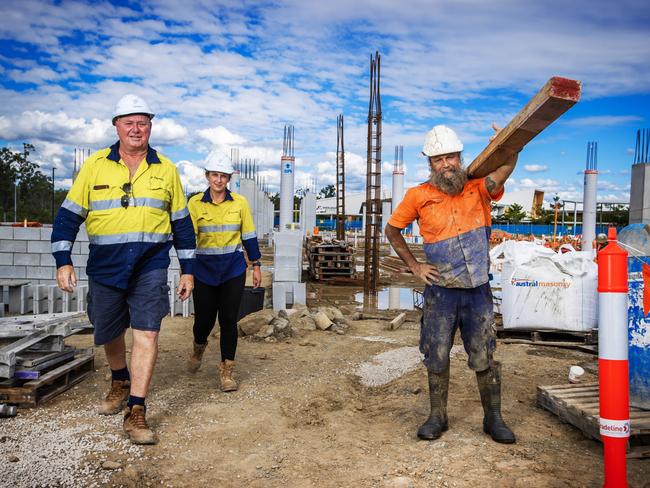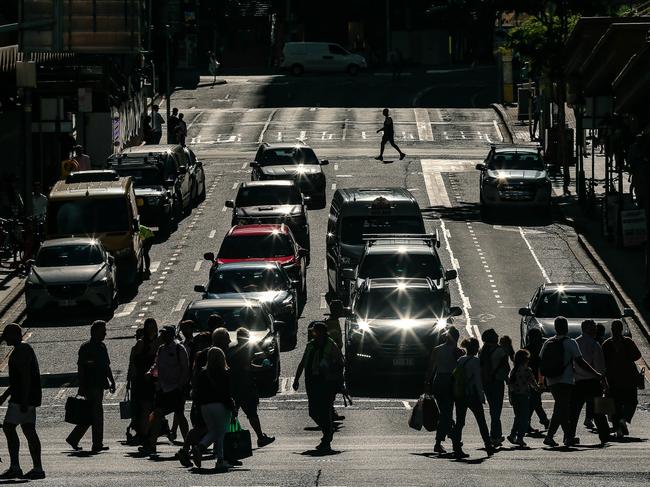Fears the government’s big housing crisis fix is dead in the water already
Experts are concerned the government’s multibillion-dollar plan to solve the country’s housing crisis is a failure – before it’s even begun.
News
Don't miss out on the headlines from News. Followed categories will be added to My News.
Anthony Albanese’s ambitious plan to build 1.2 million new homes over the next five years has been declared as dead in the water – before it even officially commences.
One of the Federal Government’s signature policies led to the establishment of a National Housing Accord between the states and territories — seeking commitment on both parts for the mega target.
Despite a co-ordinated strategy and billions in incentives, leading industry group Master Builders Australia has released modelling that shows Mr Albanese’s plan will fall well short.
“The Federal Government has announced a number of significant housing measures that focus on increasing supply in social and affordable housing and the rental market,” the body’s chief executive Denita Wawn said.
“We’re [also] seeing inflation starting to near its target range and expect a fall in interest rates which will lead to a more favourable investment market.
“However, constraints on the supply side like workforce shortages, industrial relations changes and a poor planning system counter the full effectiveness of these measures.”

Industry forecasts released by Master Builders show there will be about 1.08 million new home starts from July 1 this year to 30 June 2029, equating to 110,000 fewer dwellings than targeted.
However, Ms Wawn said industrial relations reforms and union pattern bargaining negotiations in several states have not been factored into the projections.
BuildSkills Australia recently dropped bombshell modelling that revealed the stretched construction sector needs 90,000 new workers in the next 90 days.
“Workforce shortages continue to be the biggest challenge for the industry across all sectors,” Ms Wawn said. “Domestically, we cannot fill this gap.”

Housing Minister Julie Collins told news.com.au the government’s target was ambitious “because it has to be”.
“We’re supporting states and territories to meet this target through the $3 billion New Homes Bonus, the $500 million Housing Support Program, the $10 billion Housing Australia Future Fund, and new incentives to boost the supply of rental housing,” Ms Collins said.
“These new investments will incentivise states and territories to undertake the necessary reforms, including critical planning reforms, to reach the 1.2 million target.”
The government has committed more than $25 billion over the coming decade to various housing measures, she added.
A big focus is on providing more fee-free TAFE places to encourage apprentices to join the sector, as well as skilled migration reforms.

Late last month, a meeting of leaders from the construction sector delivered an “overwhelming consensus” that the government’s goal will be tough to meet, the Housing Industry Association said.
“Builders across the country highlighted that the impact of a never-ending cascade of further regulations, complex building codes and workplace health and safety changes, taxation rules and business compliance obligations are all acting as significant barriers to the delivery of more homes,” HIA managing director Jocelyn Martin said.
“The HIA is calling on all levels of government to reset and place a pause on any substantial new regulations and let industry get on with building the 1.2 million much-needed homes in conjunction with the National Housing Accord over the next five years.”
The Federal Government is pushing states and territories to overhaul cumbersome planning regimes. Planning ministers will front National Cabinet soon, it’s understood.
It’s not just industry concerned about the target.
New South Wales Premier Chris Minns last month admitted the state won’t reach its set target on new housing supply this year, and wouldn’t commit to meeting it next year either.
Not a good start
The number of new residential dwellings approved in February fell 1.9 per cent to 12,520 – which is 5.8 per cent lower than a year earlier, according to the Australian Bureau of Statistics.
Approvals began a sharp decline in March 2021, when the figure sat at 23,134 on a seasonally adjusted basis — the highest level in almost four years.
The worst-case scenario is that if current figures remained steady with no recovery in activity, about 750,000 dwellings would be in the pipeline in five years’ time.

Meanwhile, the most recent ABS figures show there were 37,116 dwelling commencements in the September 2023 quarter, 10.4 per cent down on the previous three months and 17.4 per cent lower year-on-year.
Similarly, assuming no recovery in construction starts and based on current figures, less than 750,000 new homes would be underway at the end of the government’s five-year race.
And the number of loans issued for the purchase or construction of a new home over the past year has hit the lowest level in more than two decades.
“This is a deeper and more sustained downturn in lending for home building than any other period observed in the past 20 years,” HIA chief economist Tim Reardon said.

Mr Reardon said the RBA’s successive interest rate hikes over the past two years had hammered consumer confidence in the sector, alongside higher materials, labour and land costs.
“The slowing in lending is most evident in the largest states of New South Wales and Victoria,” he said.
“Since interest rates were raised in May 2022, new home lending in these two states have fallen by more than one-third.”
Economists expect the RBA to keep the official cash rate steady, with many tipping the first rate cut by the end of 2024.
Originally published as Fears the government’s big housing crisis fix is dead in the water already





